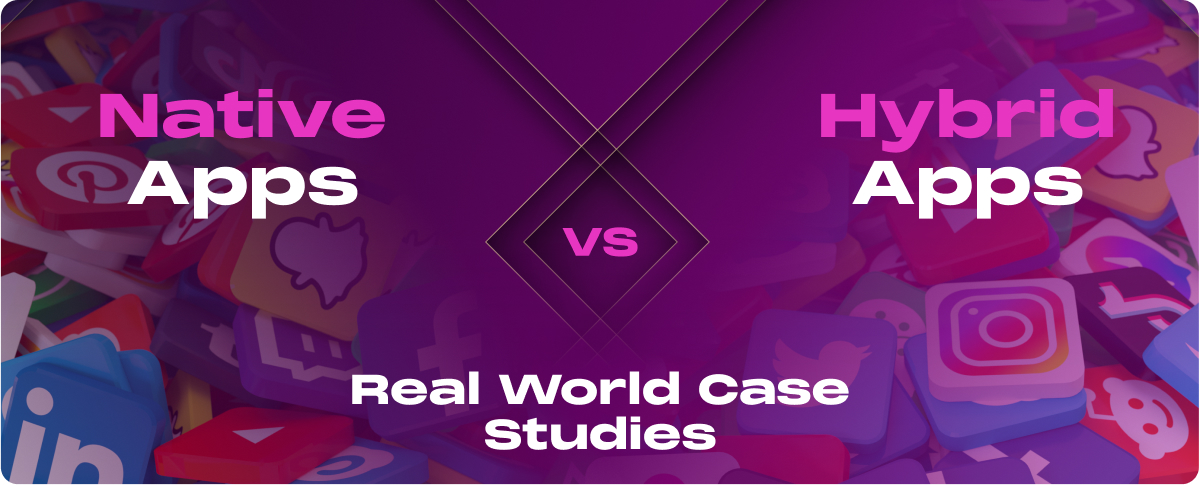Table of Contents
- 1. Does Apple accept hybrid apps?
- 2. Is app development still in demand?
- 3 Are app developers in demand?
- 4. Are Hybrid apps good?
- 5. Which app development is best?
- 6. What is the difference between native and hybrid apps in 2024?
- 7. Which is better, native or hybrid mobile development?
- 8. What percentage of mobile apps are hybrid?
1. Does Apple accept hybrid apps?
Yes, Apple does accept hybrid apps on its App Store, provided they meet Apple’s App Store Review Guidelines. Hybrid apps, built using technologies like HTML, CSS, and JavaScript and then wrapped in a native container, can be published on the App Store like native apps. However, these apps must offer a high-quality user experience, adhere to Apple’s interface guidelines, and utilize native iOS features effectively.
Apple strongly emphasizes the performance, design, and overall quality of apps. As long as a hybrid app meets these standards and doesn’t violate any guidelines, it can be successfully published on the App Store.
2. Is app development still in demand?
Yes, app development continues to be in high demand. The reasons for this sustained demand include:
- Growing Mobile Usage: With the increasing use of smartphones and tablets globally, mobile apps have become an essential medium for businesses to reach and engage their customers.
- Digital Transformation: Many businesses are undergoing digital transformation, incorporating apps into their strategies to enhance customer experience, improve operational efficiency, and offer innovative services.
- E-Commerce Growth: The surge in online shopping has fueled the demand for e-commerce apps, allowing businesses to tap into the expanding digital marketplace.
- Remote Work and Education: The shift towards remote work and online education, accelerated by the COVID-19 pandemic, has spurred the need for apps that facilitate remote communication, collaboration, and learning.
- Technological Advancements: Advances in technology, such as artificial intelligence, machine learning, and the Internet of Things (IoT), are creating new opportunities for innovative app development.
- Healthcare and Telemedicine: The healthcare sector has seen increased adoption of apps for patient care, telemedicine, and health data management.
- Gaming and Entertainment: The entertainment and gaming industries continue to thrive, driving demand for new and innovative gaming and media streaming apps.
- Customization and Niche Markets: As users seek more personalized experiences, a growing market for niche and customized apps catering to specific interests and needs is growing.
App development is in demand and evolving rapidly, with new trends and technologies emerging constantly. This dynamic field offers developers, entrepreneurs, and businesses opportunities to innovate and grow.
3 Are app developers in demand?
Yes, app developers are in high demand. This demand is driven by several factors:
- Digital Transformation: Many businesses are digitizing their operations and services. Mobile apps are a key component of this transformation, requiring skilled app developers.
- Growing Mobile Usage: The increasing use of smartphones and tablets means more companies want to offer their services through mobile apps, requiring developers to build and maintain these apps.
- E-commerce Expansion: The surge in online shopping, especially through mobile platforms, has increased demand for developers who can create and optimize e-commerce apps.
- Technological Advancements: Rapid advancements in technology like AI, IoT, and cloud computing have expanded the scope of mobile app functionalities, requiring developers with expertise in these areas.
- Diverse Industries: Almost every industry, from healthcare to education to entertainment, now relies on apps for various purposes, broadening the job market for app developers.
- Remote Work and Flexibility: The rise in remote work has increased the demand for apps that support collaboration and productivity, further fueling the need for app development talent.
- Freelance and Contract Opportunities: Besides full-time roles, there’s a growing market for freelance and contract app developers, as companies of all sizes seek to develop or update their mobile applications.
- Startups and Innovation: The continuous growth of startups, many of which are tech or app-based, also contributes to the demand for app developers.
Given the ever-evolving nature of technology and the continuous need for digital solutions, the demand for skilled app developers will likely remain strong for the foreseeable future. This makes app development a promising career path with diverse opportunities across various sectors.
4. Are Hybrid apps good?
Hybrid apps can be a good choice depending on the specific needs and goals of the app project. They offer a balanced mix of advantages and limitations.
The primary strength of hybrid apps lies in their cross-platform capabilities. They can be developed using a single codebase for multiple platforms, like iOS and Android, significantly reducing development time and costs. This makes them particularly attractive for businesses looking to establish a mobile presence quickly and cost-effectively.
Hybrid apps are built using web technologies such as HTML, CSS, and JavaScript, which are familiar to many developers. This can simplify the development process and make it easier to find skilled developers.
Hybrid apps also offer some level of offline functionality, which can benefit user engagement and convenience. Moreover, they can access certain native functionalities of the device through plugins, although this access is not as comprehensive as in native apps.
However, hybrid apps typically do not match the performance and smooth user experience of native apps, especially for graphically intensive applications or those requiring complex interactions with the device’s hardware. They might also face challenges in fully leveraging each operating system’s latest features and capabilities.
5. Which app development is best?
The best app development approach depends on several factors unique to each project.
Here’s a comparison to help you decide:
Native App Development
- Pros: Offers the best performance, a high degree of reliability, full access to device features, and a user experience that fully matches each platform’s guidelines. Ideal for performance-intensive apps and games or when a premium user experience is crucial.
- Cons: More resource-intensive, requiring separate development for each platform (iOS, Android), leading to higher costs and longer development times.
Hybrid App Development
- Pros: More cost-effective for developing cross-platform apps with a single codebase. Faster development time and easier to update. Suitable for apps that don’t require complex interactions with the device’s hardware.
- Cons: Performance might not match native apps. Limited access to certain native features and potential issues with matching the look and feel of each operating system.
Web Apps
- Pros: No need to install, accessible via web browsers, easier to maintain. Good for applications that need broad accessibility without the need for complex features.
- Cons: Limited functionality compared to native apps, dependent on internet connectivity, and cannot leverage device capabilities to the extent native apps can.
Progressive Web Apps (PWAs)
- Pros: Combines features of web apps and native apps. Installable on the device, can work offline, and access some device features. Great for improving user engagement without the complexities of native development.
- Cons: Still limited in functionality compared to native apps, especially on iOS devices.
To determine the best approach:
- Consider your target audience and their platform preferences.
- Analyze the required app features, especially the need for accessing native device functionalities.
- Factor in the budget and timeline for development and maintenance.
- Consider the desired level of user experience and performance.
Each approach has its strengths and weaknesses, and the choice largely depends on your app project’s specific requirements and constraints.
6. What is the difference between native and hybrid apps in 2024?
As of 2024, the difference between native and hybrid apps continues to be defined by their development approach, performance characteristics, and integration capabilities, although technological advancements have narrowed some of the gaps.
Here’s an overview:
Native Apps
- Development: Built specifically for each platform (iOS, Android) using platform-specific programming languages (Swift for iOS, Kotlin/Java for Android).
- Performance: Tend to have superior performance, especially for graphics-intensive applications, due to direct access to hardware and optimized use of platform capabilities.
- User Experience: Provide a high-quality user experience with interfaces that adhere closely to platform-specific design guidelines.
- Access to Device Features: Full access to all device features and capabilities, offering extensive functionality.
- Development and Maintenance Cost: Generally, it is more resource-intensive, requiring separate development and maintenance for each platform.
Hybrid Apps
- Development: Use a combination of web technologies (HTML, CSS, JavaScript) wrapped in a native container. This allows them to operate on multiple platforms using a single codebase.
- Performance: While improved from earlier years, hybrid apps may still lag behind native apps in terms of performance, particularly for demanding tasks.
- User Experience: With advancements in frameworks, the gap in user experience between hybrid and native apps has been reduced. However, ultra-high-quality UI and fluid animations are still more achievable with native apps.
- Access to Device Features: You can access a range of device features through plugins, but this access might not be as comprehensive or performant as native apps.
- Development and Maintenance Cost: More cost-effective for multi-platform development due to shared codebase. Easier and quicker updates across all platforms.
7. Which is better, native or hybrid mobile development?
Deciding whether native or hybrid mobile development is better depends on various factors related to your project’s specific needs, goals, and resources.
Here’s a comparison to guide the decision:
Native Mobile Development
- Best for: High-performance apps, complex functionalities, games, and apps requiring extensive use of device features like camera, GPS, etc.
- Performance: Superior, with smooth animations and responsive interfaces.
- User Experience: Highly optimized for each platform, adhering to specific iOS or Android design guidelines.
- Development Time and Cost: Generally higher, as separate development is needed for each platform.
- Access to Device Features: Full access, enabling advanced functionalities.
- Ideal When: Top priorities are performance, user experience, and full utilization of hardware capabilities.
Hybrid Mobile Development
- Best for: Content-driven apps, enterprise applications, and apps that don’t require complex interactions with the device’s hardware.
- Performance: Improved over the years but can be less optimal than native apps for demanding tasks.
- User Experience: This can be very good, though sometimes less fluid or platform-specific compared to native apps.
- Development Time and Cost: Lower and faster, as one codebase is used for multiple platforms.
- Access to Device Features: Limited compared to native apps but generally sufficient for most basic features.
- Ideal When: Budget and time are limited, and the app needs to be deployed across multiple platforms.
Considerations for Choice
- Budget and Resources: If the budget is limited and you want to target multiple platforms, hybrid can be more cost-effective.
- Time to Market: Hybrid apps can be developed and launched faster.
- App Complexity and Performance Needs: For highly interactive, performance-intensive apps like games, native is the better choice.
- Long-term Maintenance: Consider the effort required to maintain and update the app on different platforms.
- Target Audience: Consider the platforms used by your target audience.
Native development is ideal for performance-critical, feature-rich apps, while hybrid development suits broader, cost-effective applications with moderate performance requirements. The decision should align with your project goals, budget, timeframe, and the specific user experience you aim to deliver.
8. What percentage of mobile apps are hybrid?
According to Developer Economics, over 42% of mobile developers were using hybrid app development frameworks in 2021. This figure represents a significant increase from previous years, highlighting the growing adoption of hybrid development methodologies in the developer community.
According to Statista, in 2021, the global market share of hybrid apps was approximately 40%. This substantial proportion underlines that businesses across various sectors increasingly recognize the value of hybrid app development. The trend suggests that companies are looking for cost-effective, efficient ways to develop apps that can operate across multiple platforms without needing separate codebases.
According to Forbes, 37 of the Top 50 retail apps in America are hybrid. This statistic reflects the growing popularity of hybrid apps in sectors where businesses seek to reach a broad audience efficiently across multiple platforms.
Popular platforms like Twitter, Instagram, Gmail, Uber, and others also utilize hybrid apps to some extent. This widespread adoption indicates the hybrid model’s balance between cross-platform flexibility and the ability to offer a near-native user experience.







































